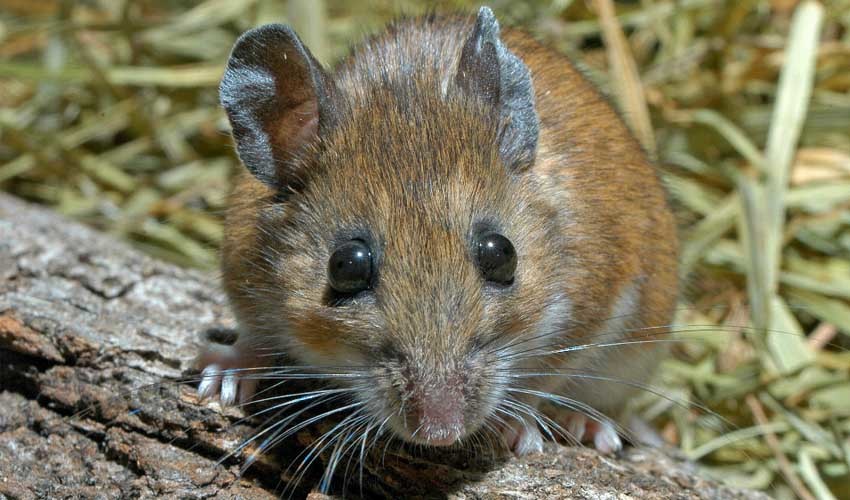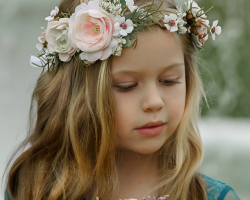Cute and funny at first glance hamsters have a very diverse character and appearance. It is on them that you can admire the article.
Content
Hamsters live in various parts of the earth, mainly in dry terrain. Rodents take root well at home due to their unpretentiousness and friendliness. Among the wide variety of hamsters, only a few breeds fell in love with pets.
Home rocks of hamsters with names and photos
- According to the external signs, hamsters have similar features with mice and proteins. Miniature animals have poorly developed vision and excellent sense of smell.
- The dentist system of rodents is in constant growth, so gritting teeth on a hard surface is their natural reflex.
- Almost all types and breeds of hamsters They have a soft, pleasant to the touch, wool. The color scheme combines white-gray, brown red, yellowish-cream shades.
Syrian hamster
- I gained the most popular among home rodents syrian hamster. Thanks to his calm disposition and quick adaptation to the new environment, the antico -Asian pet causes a minimum of trouble to his owner.
- Body length of the Syrian hamster More than 15 cm is not stretched, and body weight is preserved in the area of \u200b\u200b200 g. For thick golden wool, a short tail is practically not visible. In addition to rodents with a natural color, a person managed to derive several other colors. Syrian hamsters are found in turtle and spotted colors. Eye color can be black or pink.

- Syrian hamster It has three subspecies. The main difference between rodents is the type of wool. A rodent with long flat wool is called angora.
- Royal hamster The rodent was nicknamed with curling wool and curly mustache. The third variety of the Syrian hamster has a brilliant satin wool.
- Syrian hamsters live from 2 to 3 years. Proper care allows you to double their life expectancy.
Hamsters of the Jungarian breed
- Hamsters of the Dzungarian breed Relate to dwarf breed. The maximum length of an adult is not more than 10 cm, and weight is about 60 g.
- The rodent has a distinctive feature in appearance - dark strip along the back. The color of the hamster is tied to the season and changes from dark gray to white.

- The Dzungarian hamster lives a little less than the Syrian hamster - from 1.5 to 2 years. A friendly pet leads a predominantly night lifestyle.
- Miniature Dzungarian hamster It requires close attention, otherwise, in a matter of seconds, he will deftly hide in your apartment.
- The content of the Jungarian hamsters does not require special skills, but it must be taken into account that such a rodent does not tolerate the neighborhood. Two pets in the same territory can injure or bit each other. The main task of the owner is to correctly organize a space for an active rodent.

Roborovsky hamster
- A miniature rodent is named after the Russian naturalist the hamster of the Roborovsky breed. The fluffy pet barely reaches 5 cm in length and weighs about 30 grams.
- Against the background of the brown-golden color, white glare in the eye area resembling the shape of the masks are clearly visible. Highly set ears have a characteristic roundness.
- Nimble pets are friendly to the owner, but with difficulty are in human hands. Roborovsky’s hamster gets along well with relatives, so they are often turned in pairs.

- The natural arrangement of the limbs of the Roborov hamsters allows them actively jump. When building a place of residence for a pet, it is worth taking into account its small size and incredible flows. In the winter, the active activity of the rodent subsides a little.
- Thanks to a cheerful and active disposition, Roborovsky’s hamster will not let his master get bored.
Hamster Campbell
- Kampbell hamsters are often confused with Dzungarian rodents. A strip is also loosened on their backs, but it has blurry boundaries.
- By nature, Campbell has a gray fur coat with a white abdomen. It occurs in home rocks brown-reddish color, sometimes spotted.

- The wool is distributed unevenly, and with disheveled shreds. A miniature pet grows up to 10 cm in length and weighs about 50 g.
- The hamster Campbell has a short life - no more than 2 years. A pet that is well taken root in solitude, so with other pets.
- It is unpretentious in leaving, but due to small size it causes some inconvenience. For the content of the hammer breed of Campbell, a small aquarium is enough.
Chinese hamster
- The long tail and the color of the Chinese hamster make it look like a field mouse. Brown-brown color Perfectly masks rodent in the environment. The body length of the Chinese hamster reaches 12 cm. The mass ranges from 25 to 50 g.
- Close bags are contrasting on an elongated muzzle. Homemade Chinese hamster Easily contacts a person and leads an active lifestyle.

- Despite the convex large eyes, their vision is very weak, but the sense of smell is perfectly developed. Life expectancy is from 2 to 4 years.
- Chinese hamster Very clean and unpretentious in care. The peaceful character allows you to acquire a rodent for a small child.
Wild views of hamsters: description, photo
Wild views of hamsters:
Ordinary hamster
- The largest rodent Among the hamsters. His body is stretched to 30 cm, and the mass can be 0.5 kg. An ordinary hamster has a long thick tail.
- The rodent coat combines 3 colors - Red, white and black. The black abdomen resembles an element of clothing.
- Large dimensions of the rodent allow him to hunt mice, lizards, frogs and other prey. The main diet is plant food. He also likes to enjoy the crop from the garden.

- One adult is able to postpone up to 90 kg of stocks.
- Ordinary hamster swims perfectly. Air, typed in cloth bags, helps to stay on water. The rodent is not friendly with a person, so it is quite difficult to tame him.
Forest hamster
- Varieties of forest hamsters have an external resemblance to the rat. The rodent fur coat has gray color with a reddish tint. Most forest hamsters eat only plant foods.
- With pleasure they drag the fallen foliage into the house. Their dwelling resembles a pile of branches, leaves and other plant debris.

- Forest hamsters show activity at night, so meeting them during the day is great luck.
A sleepy hamster
- Salconic hamsters live in areas with high humidity. Due to the climatic conditions, the rodent makes his nests on the trees.
- Its appearance is easy to identify in large eyes and a long tail. A sleepy hamster loves to enjoy fruits.
- Their pantry is filled with seeds and fruit reserves, which allows you to survive the cold season in hibernation.

Kuznechik hammer
- Small rodents inhabit the arid territories. They got their name thanks to an unusual manner of communication. Kuznechik hamsters emit a piercing squeak, covering a distance of up to several tens of meters.
- The American rodent has a unique feature - the poison of Scorpio does not affect it at all. The basis of its diet is insects and individuals of his kind.

- Kuznechik hammer It is considered an excellent predator. It is better not to contact a person with such rodents.
Rat hamster
- A large body of a hamster and a long massive tail make it look like a rat. A rat hammer grows up to 25 cm in length.
- The fur coat has a uniform gray-brown color. The rodent skillfully digs deep complex burrows, which serve as a reliable refuge from enemies.

- The hamster reserves consist mainly of plant seeds and crops from the fields. The number of cubs of a rat hammer can reach 20 individuals.
- Hamsters have an amazing feature - To delay the birth of a new brood, to growing up already born offspring.







